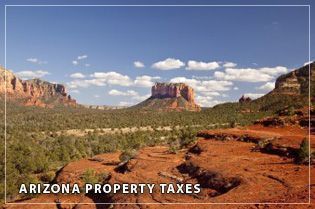As the real estate boom drove prices up, property taxes were quick to follow. Conversely, one would have expected that, as property values subsequently dropped, so too would property taxes. It’s safe to say, however, that while most of us have seen our assessed values decline sharply, actual taxes have dipped rather modestly. Let’s see if we can make some sense of it, even though…
“Arizona has the most convoluted tax system in the country.”
Pamela Pearsall, Yavapai County Assessor
“The Arizona Legislature must have been on drugs when they created the property tax system.” Anonymous
Our state legislators don’t, as a group, appear to be brightest stars in the galaxy, even without the influence of drugs that would likely have come from Mexico. In any case, apparently there is some method to the madness even if the results don’t seem to be very rational or consistent.
Property tax calculations comprise three elements: the County Assessor’s assessments,the Legislature’s legal class codes, and the Taxing Jurisdiction’s tax rate (otherwise known as the mill levy).
It’s the assessed values that are the most puzzling, and to complicate matters, Arizona has two: Full Cash Value and Limited Property Value. Full Cash Value is supposed to be based on actual market value. The Arizona Department of Revenue mandates that, for each county, the collective appraisals fall into a range of 72% to 92% of market value. The Yavapai County Assessor aims for 82%. FCV forms the basis for secondary taxes like bonds and special services – voter approved services.
The primary tax for operational budgets such As schools, fire districts, and county government is based on Limited Property Values. Initially FCV and LPV start out the same, but the growth of LPV is restricted to 10% of the previous year’s LPV or 25% of the difference between prior year’s LPV and the current year’s Full Cash Value.
Each class of property has state-mandated assessment ratio that determines final Assessed Values. For commercial properties, one multiplies the Cash Values (full and limited) times 20%. For vacant land it’s 16%. For residential it’s 10%.
From there the tax rate (aka, the mill levy) determines the final tax for each property. That’s the key to why taxes are not following property values that have declined. The mill levy depends on what the County’s budget is. Property values may have gone down, but the budgets haven’t. So, the tax rates go up to compensate for declining values.
In our next installment on this topic we’ll address the seemingly erratic assessments for individual properties and what a property owner can do about that. As bizarre as those can sometimes be, we can take some comfort in Arizona having one of the lowest property tax costs in the country.
Dr. Roy Grimm is the Head of the Buyer Brokers Group of Russ Lyon Sotheby’s International Realty, serving the Sedona and Flagstaff areas. Email Roy your questions or comments at [email protected]. Or visit www.SedonaRealEstate,com for market updates.

